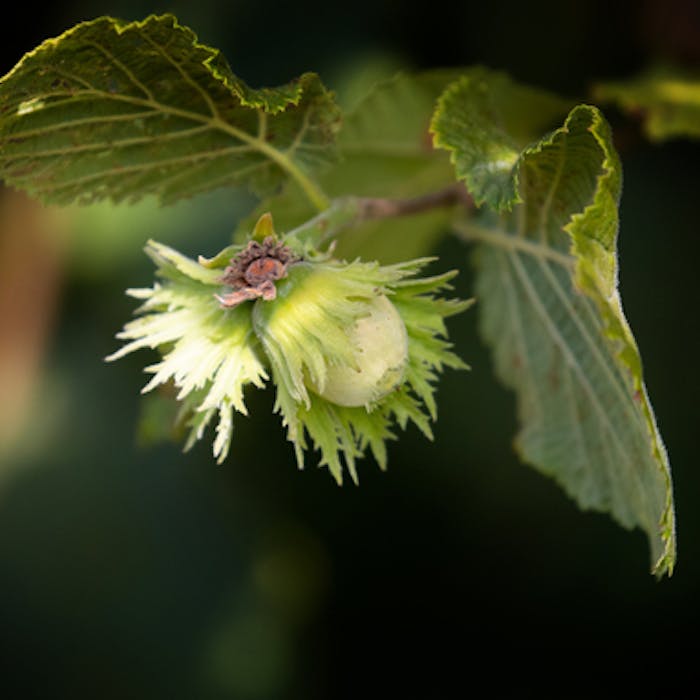
Hazel - a native nut from a useful tree
Hazel is a small native tree of British woodlands, grasslands and gardens. It is well known for its long, yellow catkins (known as 'lamb's-tails') that appear in spring, and its green nuts that ripen to brown in late summer.
Hazel has shiny, brown bark and almost circular, toothed leaves with soft hairs on their undersides. In the wild, the trees often grow near water. Cultivated hazels are regularly coppiced - the practice of cutting the stems of a tree to allow new shoots to grow. Hazel has been coppiced for 4,000 years and the poles used for wattle to make fencing, hurdles and rudimentary building construction. Wattle is hazel canes canes woven into a lattice pattern, and the foundation of wattle-and-daub walls for houses. Hazel is still used today for crafts, screens and even bean poles.
An un-coppiced tree may live for 60 or so, but a coppiced and managed tree may survive for 500.
Hazel nuts can be eaten straight from the tree with no baking or other complications, though they are much loved by squirrels, who usually get to the nuts first. Hazelnuts are also eaten by woodpeckers, nuthatches, jays and native mammals such as red squirrel, wood mouse and bank vole.
Hazel trees were the basis of UK large-scale nut production until the early 1900s. Cultivated varieties (known as cob nuts) are still grown in Kent, but most of the hazelnuts sold in Britain are now imported.
Hazel has a reputation as a magical tree. A hazel rod is supposed to protect against evil spirits, as well as being used as a wand and for water-divining. In some parts of England, hazelnuts were carried as charms and/or held to ward off rheumatism. In Ireland, hazel was known as the 'Tree of Knowledge’, and in medieval times it was a symbol of fertility.
Further reading
Links to external websites are not maintained by Bite Sized Britain. They are provided to give users access to additional information. Bite Sized Britain is not responsible for the content of these external websites.
